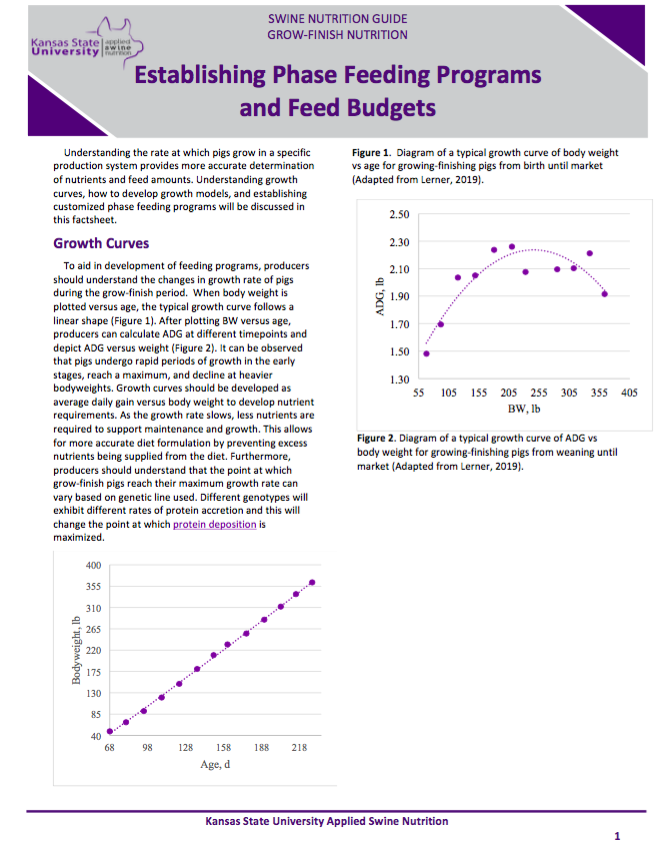Establishing Feed Budgets
Once the number of phases are determined in a feeding program, customized feed budgets within the dietary phases can be established. Using customized feed budgets based on feed efficiency, a specific amount of feed is delivered to a group of pigs to gain a predetermined amount of weight. This avoids changing diets based on visual observation which may under- or over-estimate the group’s actual weight. It also avoids errors made when changing diets based on a set time period. Therefore, making diet changes based on feed efficiency will be the most accurate method of matching diets with the appropriate weight range.
The inputs needed to design a customized feed budget includes feed efficiency for the specific system and the beginning and ending weight of the desired weight range. The number of dietary phases fed can vary, but based on close-out information, the pounds of feed required for a specific weight range can be determined. This amount is then multiplied by the number of pigs fed and the total amount of feed required can be estimated (Table 1).
Feed budgets can also be matched with either mixer capacity, the amount a feed truck can deliver, or bin capacity at the site. For example, if the delivery truck can hold 24 tons of feed, diets can be changed on 24 ton increments to avoid partial deliveries which will reduce feed mill and delivery efficiency.
If data necessary to develop customized feed budgets is not available, a calculator is available that helps producers develop a feed budget program. To utilize the calculator, the producer inputs their beginning weight, ending weight, and feed efficiency. Then, the producer determines the ending weight for the desired number of phases. The pounds of feed per pig will then be calculated for each phase. Table 2 provides an example of a 5 phase feeding program.
Improvements in feed efficiency will decrease the amount of feed needed for each phase. This can be observed in the differences of amount of feed needed between barrows and gilts using the same number of phases and weight ranges within these phases (Table 2).
Using feed budgets based on feed efficiency allows for more accurate determination of the amount of feed needed for a group of pigs to gain a predetermined amount of weight to avoid excesses or deficiencies in nutrients being provided.
In summary, understanding changes in growth rate of grow-finish pigs allows for more accurate development of growth curves. Reference equations exist to aid in the development of growth curves, but producers can develop growth curves that are specific to their production system. This allows for more accurate determination of nutrient requirements at different stages of the grow-finish period and allows for development of a phase feeding program specific to a production system.


Table 2. Example of a customized feed budget program based on estimated F/G and body weight ranges (KSU Feed Budget Calculator).
